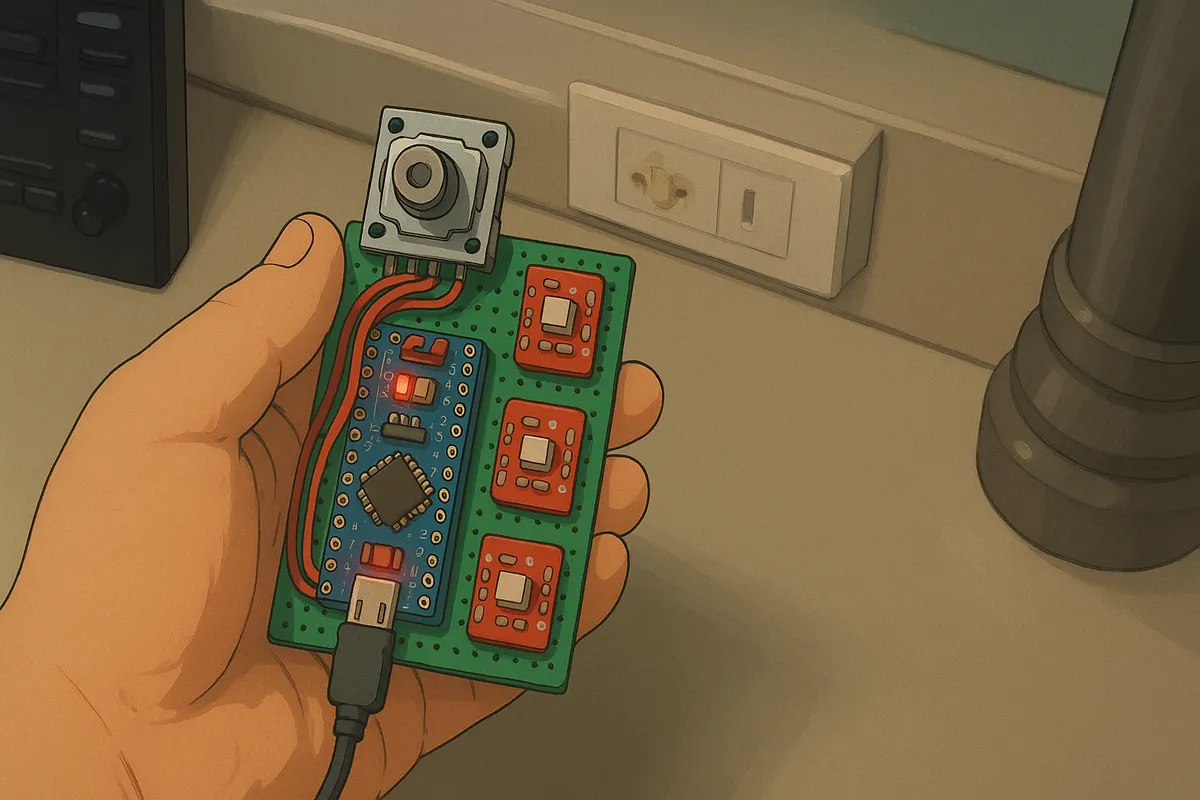“When your brain’s multitasking, let your fingers do the dancing.”
— Me, soldering this thing at 2AM.
🌈 Why Build a Joystick Kaleidoscope?
As someone with ADHD, I often crave non-disruptive sensory feedback—something to channel micro-movements without killing focus. This little DIY kaleidoscope does exactly that: It lets you tilt, nudge, or spin a joystick to create beautiful shifting LED colors, like a mood ring that vibes with your thumb.
It’s not about posture correction (yet), but more about focus stimulation through tactile and visual feedback. Bonus: It’s addictive.
🧩 Components Used
| Component | Description |
|---|---|
| Joystick Module | Analog stick with X and Y axes |
| Arduino Nano | The tiny brain running the light show |
| WS2812B LEDs | Individually addressable RGB LEDs (x3) |
| Li-ion Battery | Rechargeable power, portable, perfect for ADHD |
| Switch + Enclosure | Cardboard + velcro = chaos box aesthetic |
🔧 How It Works
The joystick outputs analog voltage values for X and Y positions. These are read by the Arduino, and each axis is mapped to a color channel (Red and Green). The Blue channel randomly updates when the joystick is moved off-center, creating a cool, shifting kaleidoscope effect.
The colors change smoothly, reacting to tiny movements—like a visual fidget spinner but smarter.
💡 Code Breakdown
#include <Adafruit_NeoPixel.h>
#define JOY_X A0
#define JOY_Y A1
#define LED_PIN 6
#define NUM_LEDS 3
Adafruit_NeoPixel strip(NUM_LEDS, LED_PIN, NEO_GRB + NEO_KHZ800);
uint8_t blue = 0;
unsigned long lastZUpdate = 0;
const unsigned long zInterval = 150;
void setup() {
strip.begin();
strip.setBrightness(30);
strip.show();
randomSeed(analogRead(A2));
}
void loop() {
int xVal = analogRead(JOY_X);
int yVal = analogRead(JOY_Y);
uint8_t red = map(xVal, 0, 1023, 0, 255);
uint8_t green = map(yVal, 0, 1023, 0, 255);
if (abs(xVal - 512) > 10 || abs(yVal - 512) > 10) {
if (millis() - lastZUpdate > zInterval) {
blue = random(0, 256);
lastZUpdate = millis();
}
}
for (int i = 0; i < 4; i++) {
strip.setPixelColor(i, strip.Color(red, green, blue));
}
strip.show();
delay(20);
}